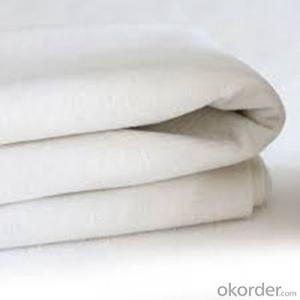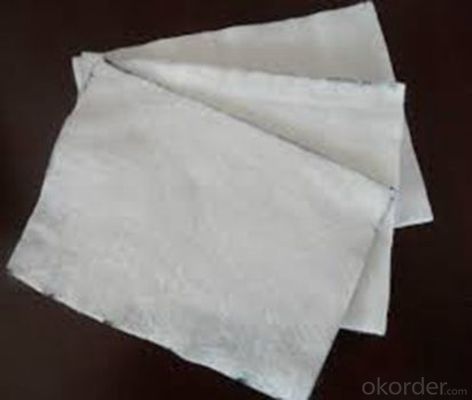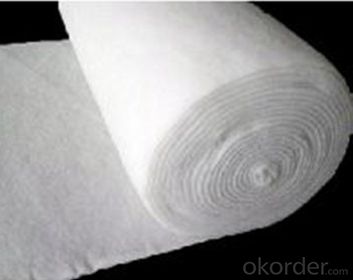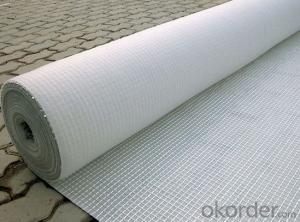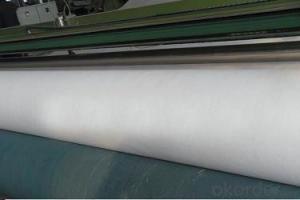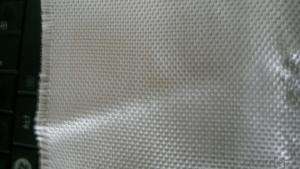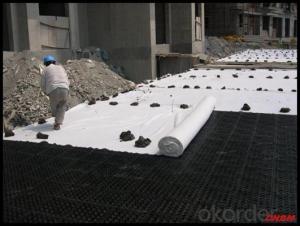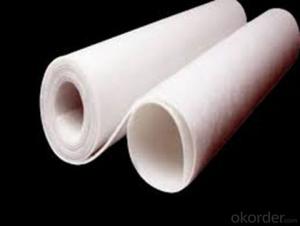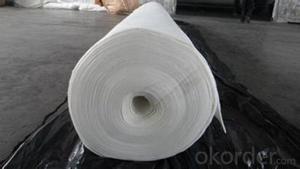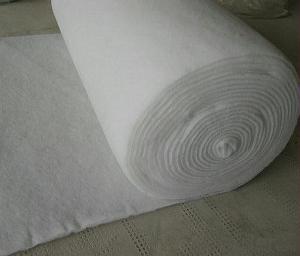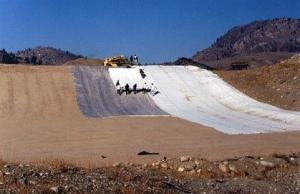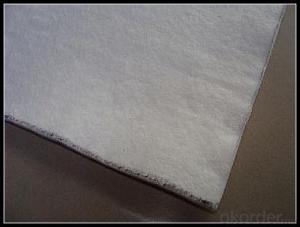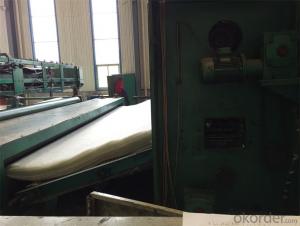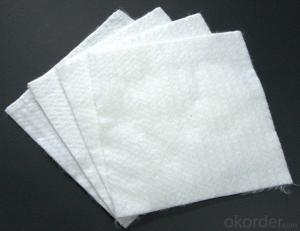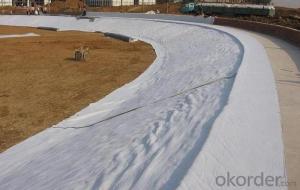Géotextile 2m Isolation Filament Polypropylene Geotextile Fabric for Road
- Loading Port:
- China main port
- Payment Terms:
- TT OR LC
- Min Order Qty:
- 1000 m²
- Supply Capability:
- 10000000 m²/month
OKorder Service Pledge
OKorder Financial Service
You Might Also Like
Specification
Applications:
1) Filtration :
The filtration layer of the dykes, river canal, seacoast, concrete slope, retaining walls. At the same time of preventing the clay granule from passing, it allows the water and the gas pass through freely.
2) Separation :
The isolation of the railway dregs and the roadbed, roadbed and the soft base, surface of the airdrome and parking lot and the groundsill, different dam materials. It isolates the soil and the gravel of two kinds different granule pathway from the groundsill or other buildings.
3) Adding muscle :
The highway, railway, soil-stone dam, breakwater, airport, backfill soil of retaining wall, slope protection, etc in which distributes the earth stress, prevents the side-displacement of the earth body and improves the earth body stability.
4) Protection :
It prevents the bank from being washed out, protects the bank and the bottom, prevents the water and soil from being washed away.
Packing and shipping:
♦ Packing:in plastic film bag(keep away from moisture) and PP bag or as your customize.
♦ Shipping:By sea or as your customize
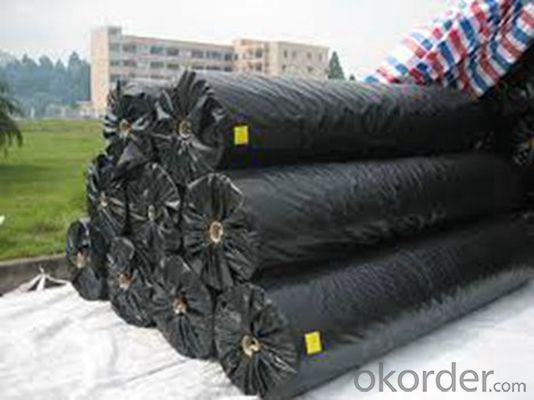
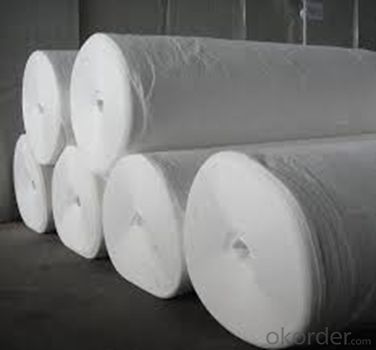
Our Service
Quality assurance
1.On a regular basis or as per your request,we entrust national testing agencies to conduct quality inspections
2. Strictly in accordance with the ISO9001-2008 international quality system standard,we monitor and manage the whole process throughout production,quality testing,and measurement to ensure product quality
3. For quality-related construction delay or substandard construction(except for damage or losses due to customer’s responsibility or irresistible natural disasters),we have refunding,replacement,and repair services.We will respond to customers’ feedbacks on quality issues within 24 hours.
Q: What kind of payments does jenor support?
A: T/T, L/C, Cash are accepted.
Q: Do you charge for the samples?
A: Accordeing to our company policy, the samples are free, we only charge the freight fee. And we will return the freight fee during the next order.
Q: Can you produce according to customers' design?
A: Sure, we are professional manufacturer, OEM and ODM are both welcome.
Q: Do you have other products?
A: Yes, please check the pictures:
Packaging & Shipping
Packing: PLASTIC FILM INSIDE, AND WOVEN BAG OUTSIDE
Shipping: About 15 days after receipt the deposit
pecifications
geotextile fabric
permeability,filtration,easy for construction
ISO and CE certificate
Good quality and competitive price
- Q: How do geotextiles improve the performance of geocells?
- Geotextiles improve the performance of geocells by providing additional reinforcement and stabilization to the structure. They act as a barrier, preventing soil erosion and promoting effective soil confinement within the geocell system. Geotextiles also enhance the load distribution across the geocell walls, increasing the overall strength and stability of the structure.
- Q: Can geotextiles be used in mining operations?
- Yes, geotextiles can be used in mining operations. Geotextiles are commonly used in mining to reinforce soil and prevent erosion, control sedimentation, and provide stability to slopes and embankments. They are also used for filtration, drainage, and separation purposes in mining applications.
- Q: What are the uses of acupuncture geotextiles?
- Acupuncture geotextile is divided into filament spunbonded acupuncture non-woven geotextile and polyester staple acupuncture non-woven geotextile two. Filament spunbond acupuncture non-woven geotextile with high-quality polyester chips through high-temperature melting, spinning into a network, acupuncture into cloth production, filament spunbond acupuncture non-woven geotextile has a high tensile strength, Anti-tear strength, anti-breaking strength, in the project to play the role of reinforcement protection, generally used in roads, railways, dams, water conservancy construction, tunnels, landfills and other projects. Polyester staple acupuncture non-woven geotextile polyester staple fiber made by acupuncture, polyester staple acupuncture non-woven geotextile has a good water filter performance, the price is relatively low, in the project to play a reinforced protection, The role of filtration, generally used in civil engineering isolation, filtration, drainage sites.
- Q: What are the environmental impacts of geotextile production?
- The environmental impacts of geotextile production primarily include energy consumption, greenhouse gas emissions, and waste generation. The production process requires significant amounts of energy, mainly derived from fossil fuels, leading to carbon dioxide emissions and contributing to climate change. Additionally, the extraction and processing of raw materials for geotextiles can result in habitat destruction and soil degradation. Furthermore, the production process generates waste, such as wastewater, air emissions, and solid waste, which can have adverse effects on local ecosystems if not properly managed.
- Q: Nail cave geotextile with a nail where?
- Hardware market can be nails, I professional production geotextile geomembrane and other geotechnical materials, wish smooth
- Q: Can geotextiles be used in agricultural applications?
- Yes, geotextiles can be used in agricultural applications. They are commonly used to control soil erosion, improve soil stability, and enhance drainage in agricultural fields. Geotextiles can also be used for weed control, separating different soil layers, and protecting plants from pests and harsh weather conditions.
- Q: Can geotextiles be used in geosynthetic clay liner applications for containment systems?
- Yes, geotextiles can be used in geosynthetic clay liner applications for containment systems.
- Q: Eva waterproof board and ecb waterproof board What is the difference between the two
- 1, two are waterproof board, can be used for highway, railway tunnel seepage, but the product material is different, the appearance is not the same. 2, EVA waterproof board there are two conventional, one is a simple EVA waterproof board without composite geotextile, the other is combined with the geotextile EVA waterproof board. Two collectively referred to as EVA waterproof board are tunnel waterproof board, is the main material of the tunnel seepage. 3, ECB waterproof board There are two conventional, one is a simple white or black ECB waterproof board, the other is with self-adhesive asphalt waterproofing membrane. Both can be used for tunnel seepage.
- Q: What are the environmental impacts of using geotextiles?
- The environmental impacts of using geotextiles can vary depending on the specific application and the materials used. However, in general, geotextiles can have positive environmental benefits. They can help prevent soil erosion, promote vegetation growth, and provide stability to slopes and embankments. Geotextiles can also facilitate the filtration of water and the retention of sediment, reducing water pollution. Additionally, the use of geotextiles can minimize the need for heavy construction machinery, which can help reduce carbon emissions and minimize disturbance to natural habitats. However, it is important to consider the potential environmental impacts associated with the manufacturing, disposal, and maintenance of geotextiles, as these can contribute to greenhouse gas emissions and waste generation if not managed properly.
- Q: 250 grams of geotextile how much money a square
- 3 yuan, GB
Send your message to us
Géotextile 2m Isolation Filament Polypropylene Geotextile Fabric for Road
- Loading Port:
- China main port
- Payment Terms:
- TT OR LC
- Min Order Qty:
- 1000 m²
- Supply Capability:
- 10000000 m²/month
OKorder Service Pledge
OKorder Financial Service
Similar products
Hot products
Hot Searches
Related keywords
